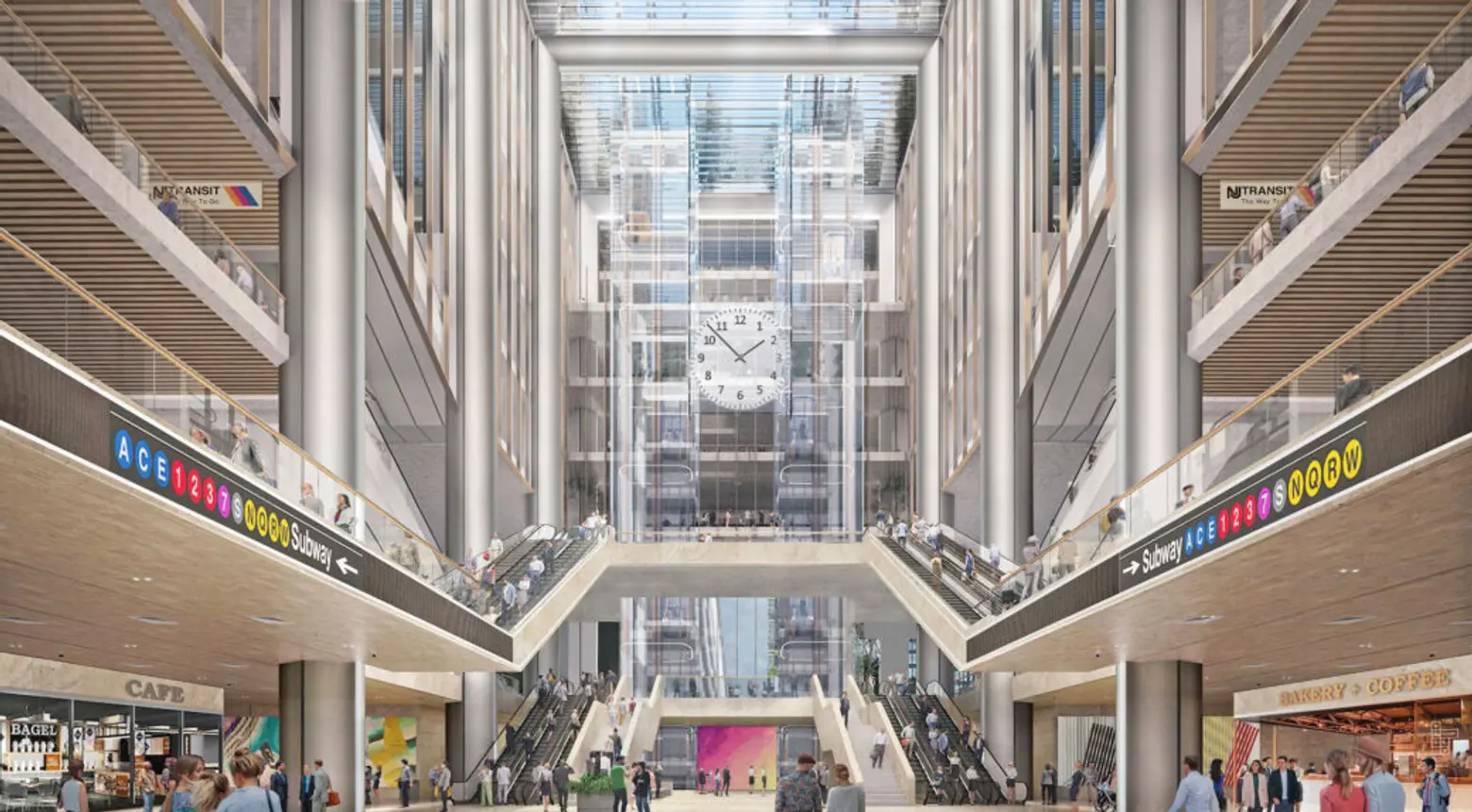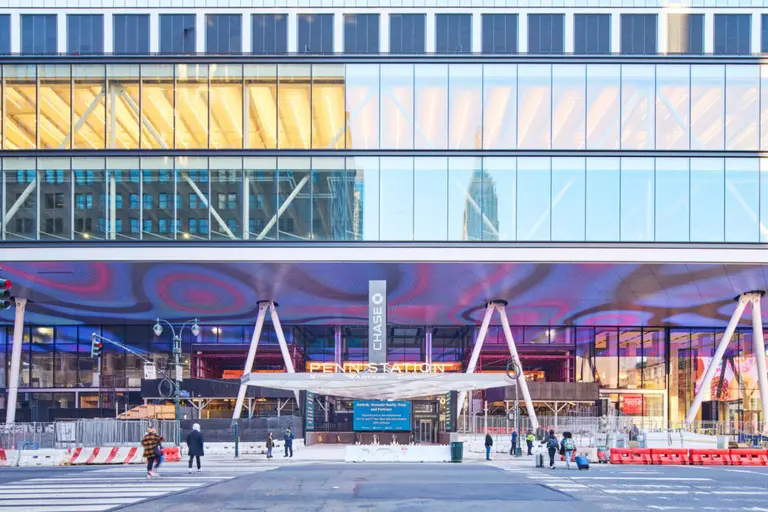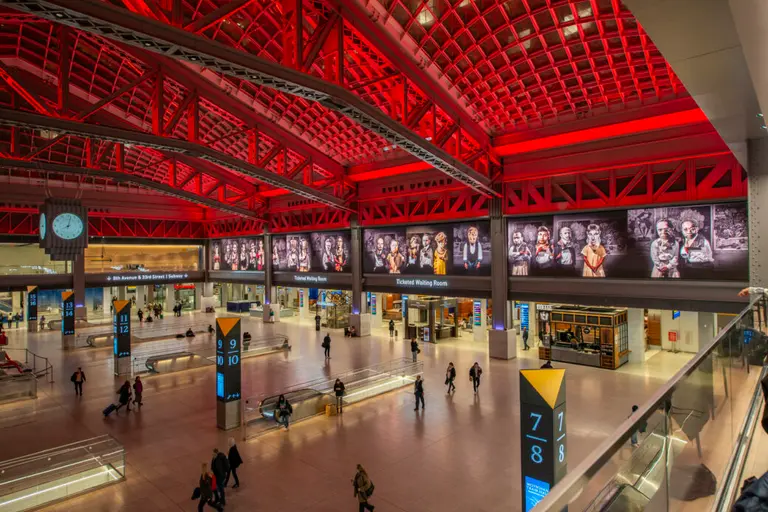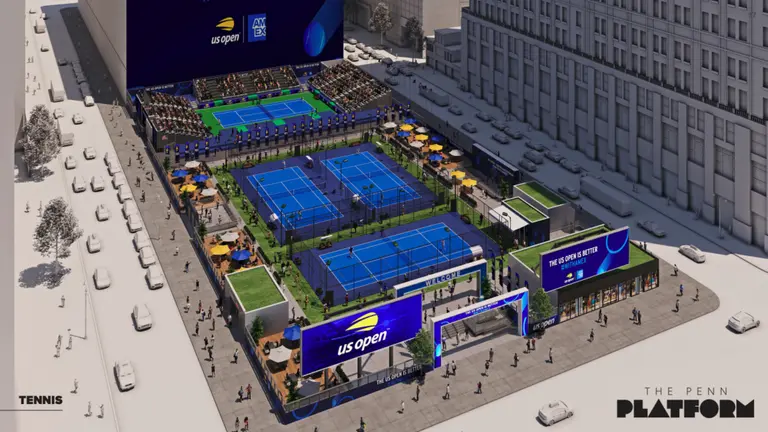Feds approve $10B Port Authority Bus Terminal redesign

Renderings courtesy of the Port Authority of New York and New Jersey
A $10 billion plan to transform Midtown’s aging Port Authority Bus Terminal into a world-class transit hub has received approval from the federal government and the city of New York. The Port Authority of New York and New Jersey (PANYNJ) on Wednesday was issued a record of decision by the Federal Transit Administration (FTA) after an “exhaustive” environmental review. The first phase of work, which will construct deck-overs above Dyers Avenue, is slated to begin early next year.

In October, the City Planning Commission (CPC) voted unanimously to approve the bus terminal’s revamp, replacing the dreary, 74-year-old facility with a vibrant, modern transit center featuring ground-floor retail space and a public park.
Plans to replace the terminal first started circulating in 2013 to account for the growth in ridership. Since then, nearly 30 separate proposals have been produced.
A major driver for the new terminal is anticipated growth in bus ridership. On an average weekday in 2019, the terminal saw approximately 260,000 passengers on 7,800 buses, making up roughly 23 percent of trips in and out of Manhattan’s core. However, officials estimate that this number could rise to 337,000 passengers daily by 2040, as reported by Crain’s.
As part of the redesign, the facility will include a new 2.1 million square foot main terminal, a separate storage and staging building, and new ramps leading directly in and out of the Lincoln Tunnel, vastly improving capacity, bus speed, and congestion on adjacent streets.
The project also includes the permanent closure of a portion of 41st Street between Eighth and Ninth Avenues, a central main entrance, additional street-facing retail, and a large multi-story atrium.
The new storage space, set to be constructed to the west of the terminal on 40th Street between Ninth and 10th Avenues, will allow buses to idle before heading to gates to pick up riders. Presently, buses are forced to sit and wait, causing traffic on nearby streets.
Additionally, existing traffic lanes on Dyer Avenue will be covered by roughly 3.5 acres of public green space. A winding ramp connecting the Lincoln Tunnel will make up the western portion of the project, spanning the existing footprint of the site along 40th Street to 10th and 11th Avenues.
Built with the future in mind, the terminal will be designed to achieve net-zero emissions, accommodate all-electric bus fleets, and implement modern technology throughout.
The building will also include sustainability and resiliency measures, including LEED certification and clean construction, onsite renewable energy, zoned heating and cooling systems, and heat recovery and reuse technology.
The new park, ramps, and storage space could be completed by 2028, while the main terminal building is slated for completion in 2032.
The project will also fund its redevelopment through two commercial skyscrapers that will be built along Eighth Avenue, on the corner of 40th and 42nd Streets. A third office tower, to be built on land bounded by West 30th and West 31st Streets and Ninth and 10th Avenues, would also support the project.
PANYNJ and Mayor Eric Adams agreed in March to an arrangement that contributes up to $2 billion in property tax revenue from the commercial towers to help fund the terminal’s redevelopment, according to Crain’s.
“The Midtown Bus Terminal is a crucial transportation hub for New York, servicing over 250,000 passenger trips on a busy weekday alone, and we are committed to providing a world-class travel experience to and from Manhattan through this exciting transformation of the terminal,” Gov. Kathy Hochul said.
“New York is constantly innovating and advancing, and this project will help us meet our projected ridership growth while also reducing congestion on our streets and providing an improved travel experience for our commuters.”
In August 2022, the Port Authority selected the architecture firm Foster + Partners and the engineering and design team Epstein to design the new facility and renderings of the project’s current design were released earlier this year.
In September, PANYNJ and the FTA signed the final environmental impact statement for the terminal’s redevelopment. The signing, a major step towards a federal record of decision on the project, followed a final round of public hearings that produced more than 700 public comments.
RELATED:




























